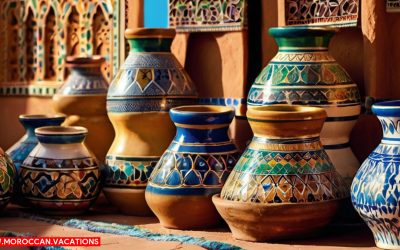Defining Sahara’s Nomadic Tribes
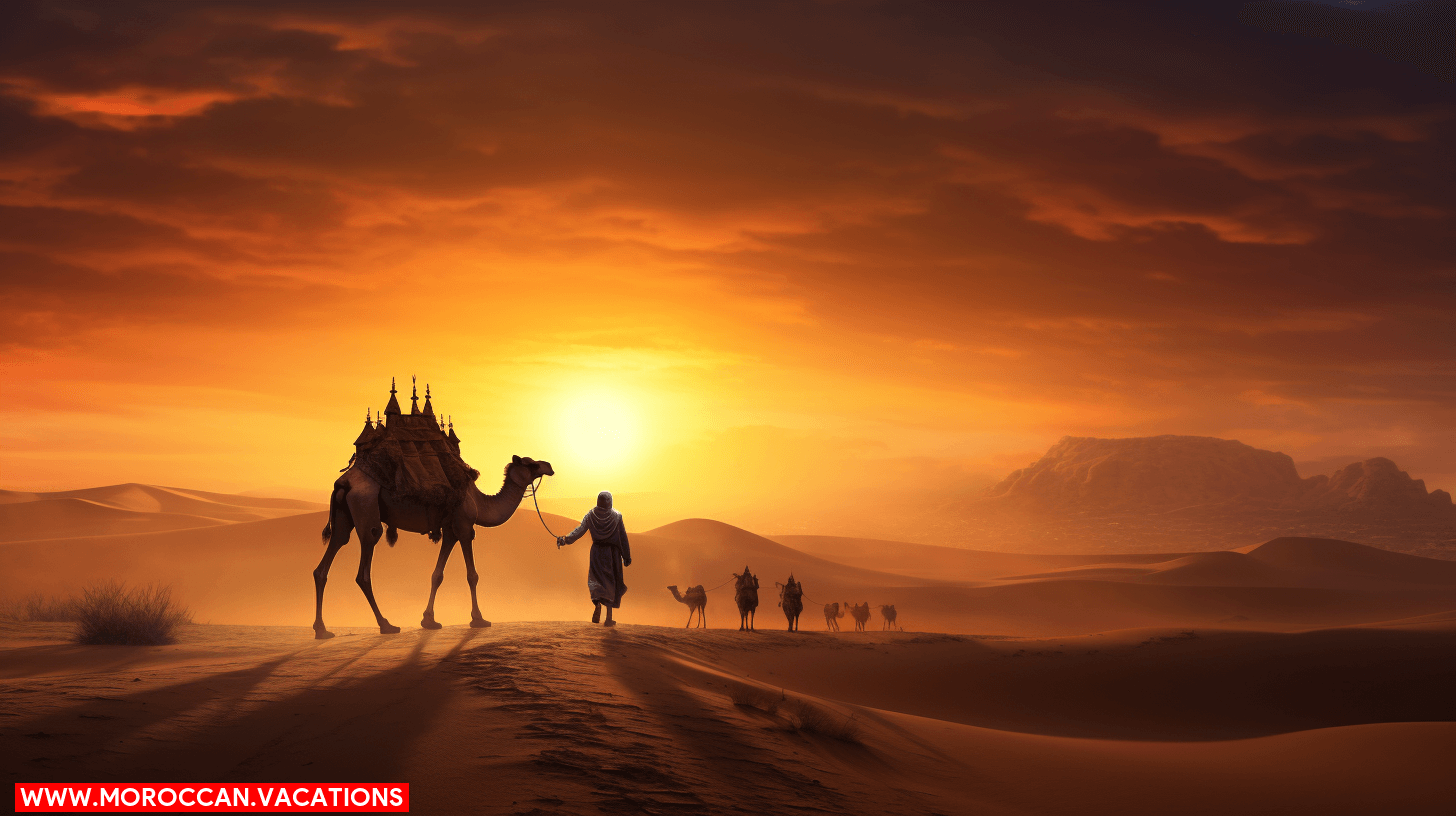

You’re about to dive into the Sahara‘s vibrant tribal heart. It’s not your typical holiday. You’ll feel ancient rhythms pulsate through the dunes, taste unique cuisine, and experience hospitality honed over centuries. It’s more than just a journey; it’s a deep connection to a resilient and adaptable culture. So, dust off your adventure boots; it’s time to sync your heartbeat with the Sahara’s nomadic rhythms.
Amid the vast dunes of the Sahara, you’ll find an array of nomadic tribes, each with its unique customs, languages, and traditions that have withstood the test of time. These tribes embody the spirit of freedom that you, as an adventurer, might yearn for. Their nomadic lifestyle in Sahara’s tribal encounters is a testament to their resilience and adaptability.
Each tribe has its distinct language, a reflection of their rich cultural diversity. The Tuareg, for example, communicate in Tamasheq, while the Berbers converse in Tamazight. These languages, like the shifting dunes, have evolved but remain deeply connected to their roots.
You’ll also discover traditional music and dance in exploring Sahara’s cultural melodies. From the rhythmic Berber music to the soulful Gnawa tunes, each beat, each strum resonates with stories of their journey across the sands. Dance, too, is integral, with movements that mimic the ebb and flow of their nomadic existence.
The Rich Tapestry of Nomadic Life
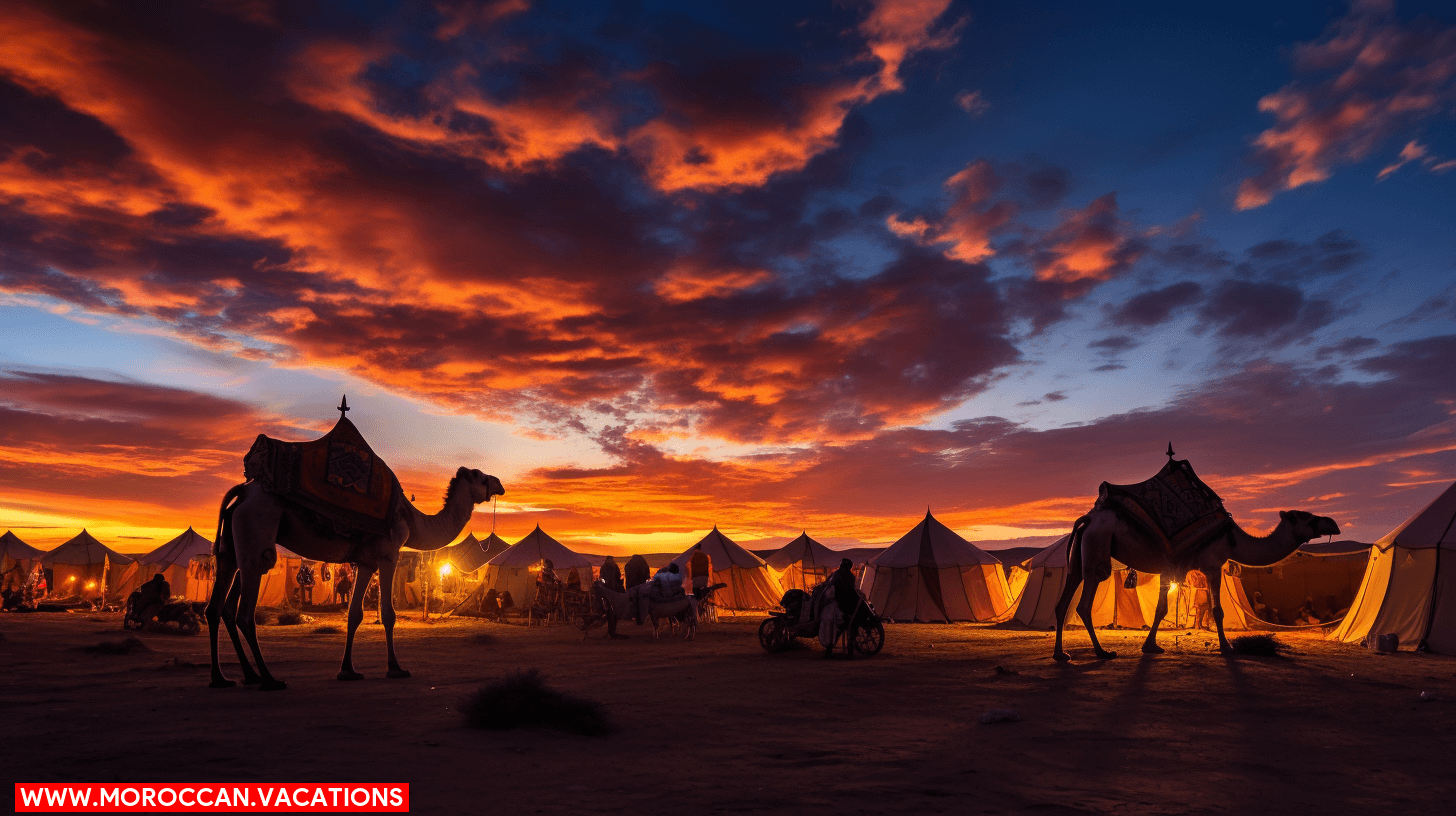

Diving into the rich tapestry of nomadic life, you’ll find an abundance of cultural treasures that reflect the resilience of Sahara’s tribes. Their way of life, steeped in tradition and shaped by the harsh desert environment, is a testament to their enduring spirit.
You’ll experience their music, a rhythmic blend of drums and stringed instruments, and their dances, expressive performances that tell stories of their history and culture. You’ll also enjoy their hospitality, shown in the sharing of meals and stories around the fire.
Here’s a snapshot of this rich cultural tapestry:
| Aspect | Significance | Experience |
| Music | Unites the tribe, tells stories | Participation in communal music sessions |
| Dance | Expresses emotions, marks celebrations | Witnessing tribal ceremonies and festivals |
| Hospitality | Emphasizes community, generosity | Sharing meals, stories with tribe members |
| Clothing | Identifies tribe, protects from elements | Wearing traditional tribal attire |
| Handicrafts | Preserves traditions, provides income | Learning craft-making from tribe members |
As you delve deeper into the nomadic way of life, you’re not just observing an ancient culture. You’re participating in its preservation, ensuring these traditions continue in the heart of the Sahara.
Traditional Sahara Music Genres
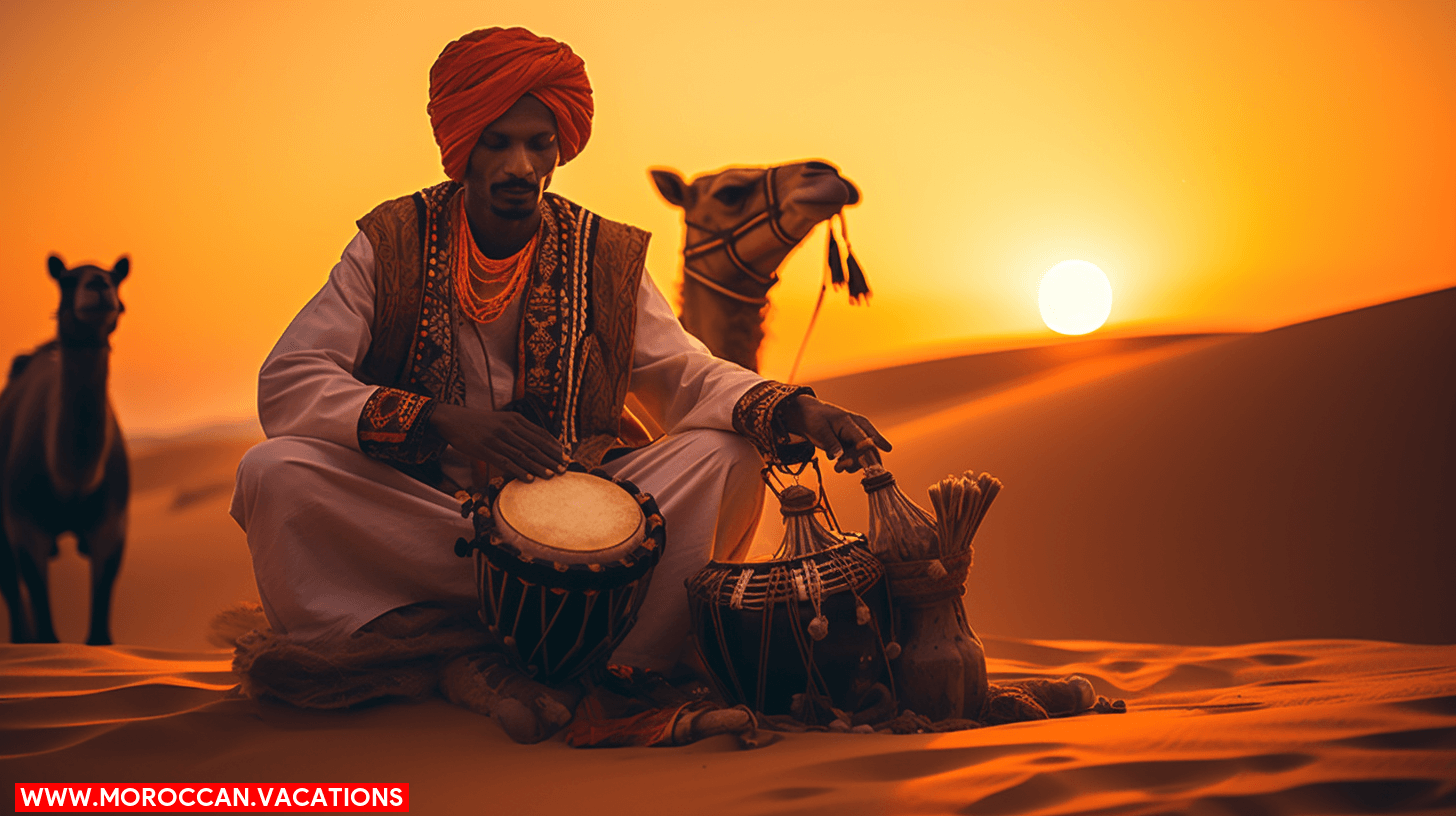

As you journey through the Sahara’s musical landscape, you’ll encounter an evolving array of folk music that’s as diverse as the land itself. Pay attention to the mastery of instrumental techniques, a testament to the region’s rich cultural heritage. The influences on Sahara’s music are profound, reflecting a confluence of historical, social and geographical factors.
Sahara’s Folk Music Evolution
You’ll find the evolution of Sahara’s folk music, marked by diverse traditional genres, utterly captivating and unique. Born from the heart of the desert, these melodies carry the essence of freedom, woven into every note. From the soulful chants of the Tuareg people, their music often accompanied by a single-stringed instrument called the Imzad, to the rhythmic Gnawa music, filled with spiritual undertones, you’ll find a rich tapestry of sound. These resilient art forms, undeterred by the harsh desert conditions, have adapted and evolved, absorbing influences from neighboring cultures. Yet, they’ve managed to retain their authentic core, offering a window into the nomadic soul. It’s a testament to the power of music as a medium of cultural preservation and evolution.
Instrumental Techniques in Sahara
Moving on from the evolution of Sahara’s folk music, let’s delve into the instrumental techniques that shape these traditional Sahara music genres. You’ll find that a variety of stringed instruments are central, like the Imzad, a single-stringed violin played exclusively by Tuareg women, and the Tidinit, a lute-like instrument. These tools create a rhythmic foundation that’s both captivating and hypnotic. Percussion instruments, such as the T’bel, a large drum covered with camel skin, add depth to the melodies. The music’s complexity is in its simplicity, relying on subtle variations in rhythm and pitch. Each instrument’s distinct sound marries together, creating an auditory experience that’s as vast and shifting as the Sahara itself. This is freedom, expressed in the language of music.
Influences on Sahara Music
Now, let’s explore the three main influences that have shaped traditional Sahara music genres over the centuries. These are:
- Indigenous Berber Traditions: The Berber tribes, with their rich folkloric music, have been a source of vibrant rhythms and melodies. The Amazigh songs often carry profound messages of freedom and resistance.
- Sub-Saharan African Influences: These have introduced polyrhythms and certain unique musical instruments, adding substantial depth to Sahara music.
- Arab-Islamic Culture: Since the spread of Islam in the 7th century, Arabic musical modes and poetic forms have greatly influenced Sahara’s music scene.
The interplay of these influences has created a soundscape that’s as diverse as the Sahara itself, a testament to the resilience and adaptability of its people and their unfettered spirit.
Dance: A Central Cultural Element
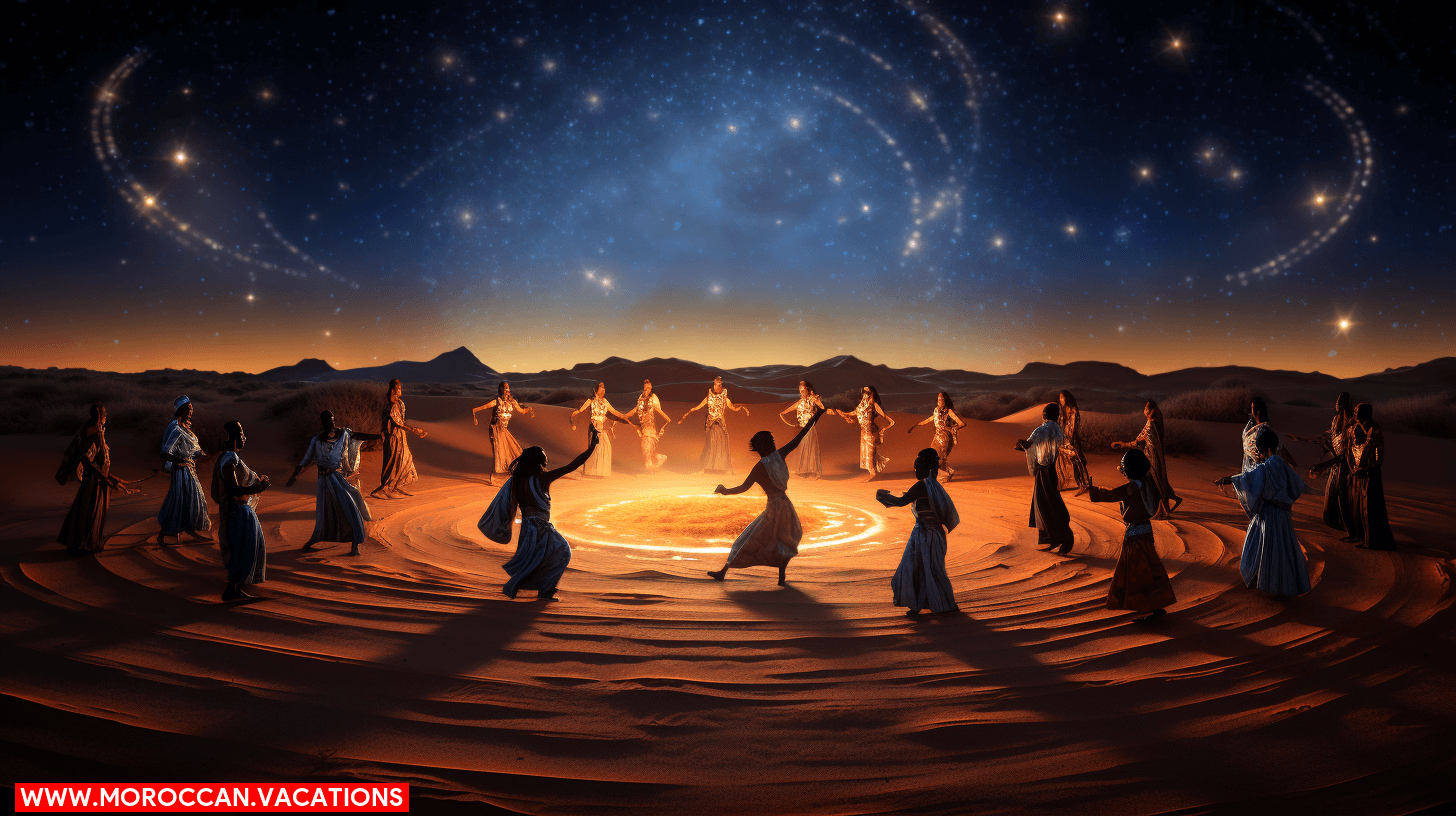

In the heart of Sahara’s tribal culture, you’ll find dance as a central element that embodies their nomadic rhythms and vibrant traditions. Each movement is a testament to their shared stories, a physical manifestation of their collective history. It’s not merely a performance, but a living, breathing extension of their culture.
Their dances are deeply rooted in the cycles of nature and the nomadic lifestyle. You’ll see the fluidity of desert winds in the sway of their bodies, the relentless endurance of their journey in the stomp of their feet. Dance is their voice, their language, it talks of their struggles, their victories, their dreams.
The tribal dances of Sahara aren’t choreographed performances, they’re organic expressions of their community’s spirit. They’re a celebration of freedom, a defiance against the relentless desert, a testament to the resilience of life. Here, dance is not a hobby, but a way of life, an integral part of their identity.
As you immerse yourself in these tribal dances, you’ll feel a deep connection with the people of Sahara. The rhythms will pull you in, the movements will speak to you. This is the power of dance in Sahara’s tribal culture, a central element, a vibrant tradition, a nomadic rhythm that resonates with the human spirit.
Instruments of Sahara’s Tribes
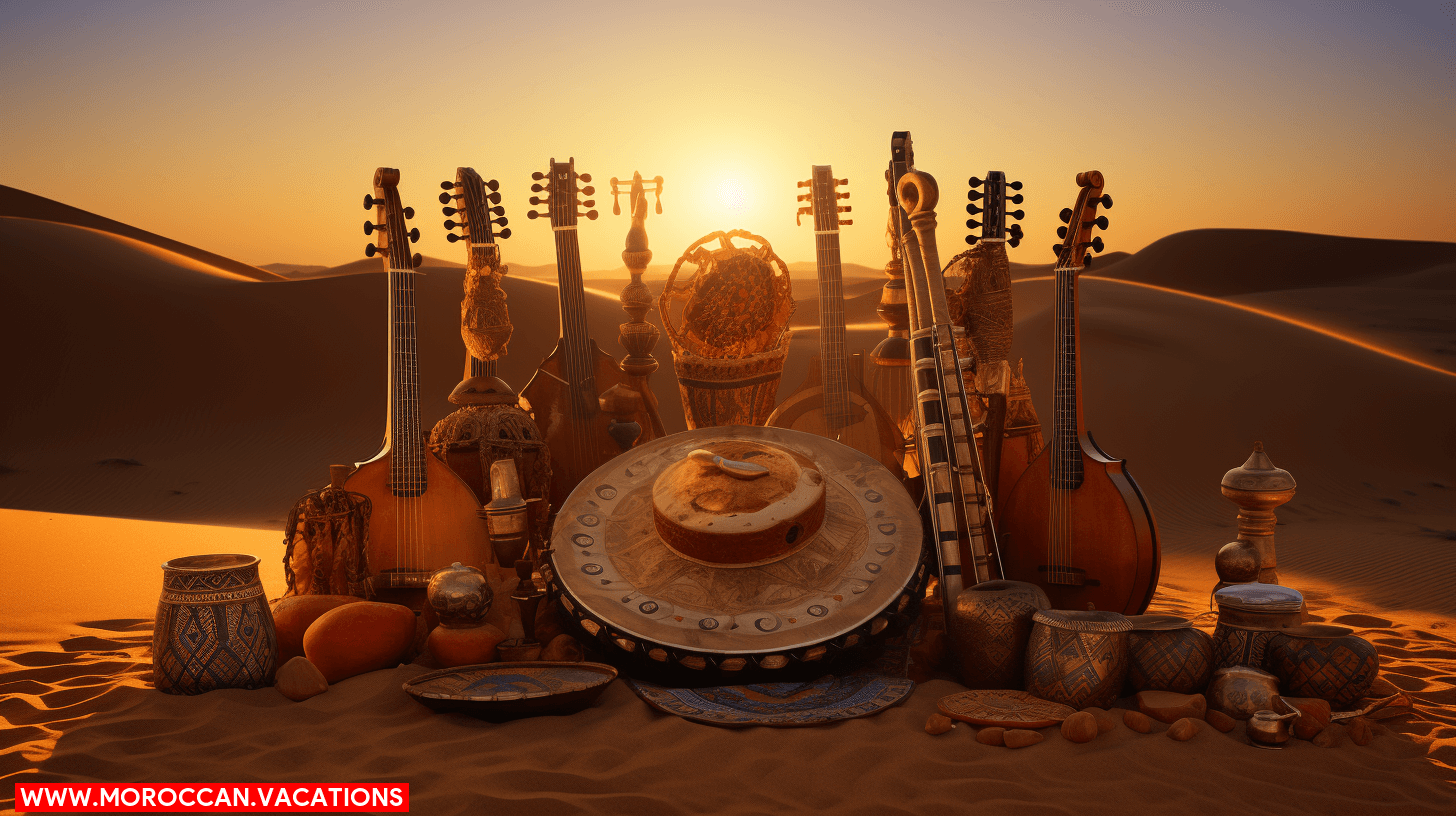

Building on the significance of dance, you’ll also uncover the vital role of traditional instruments in Sahara’s tribal rhythms. The instruments, deeply rooted in the culture, play a pivotal role in expressing joy, sorrow, and spiritual connection. They’re not just tools for making sounds; they’re also vessels carrying centuries of stories, emotions and traditions.
- The Tbel: This large drum, covered on both sides with goat or camel skin, is the heartbeat of Saharan music. Its deep, resonating sound sets the rhythm for dances and ceremonies.
- The Imzad: An ancient, single-stringed violin played exclusively by women, the Imzad is crucial in Tuareg culture. Its haunting melodies are a symbol of resistance, freedom and female empowerment.
- The Kora: Similar to a lute or harp, the Kora’s 21 strings create a delicate, complex sound that intrigues and captivates the listener. It’s a favorite instrument for storytelling and historical narratives.
Delving into these instruments, you’ll realise that they’re not just for music. They’re a living, breathing part of Sahara’s tribes, weaving together the threads of their history, identity, and aspirations for freedom.
The Art of Tribal Storytelling
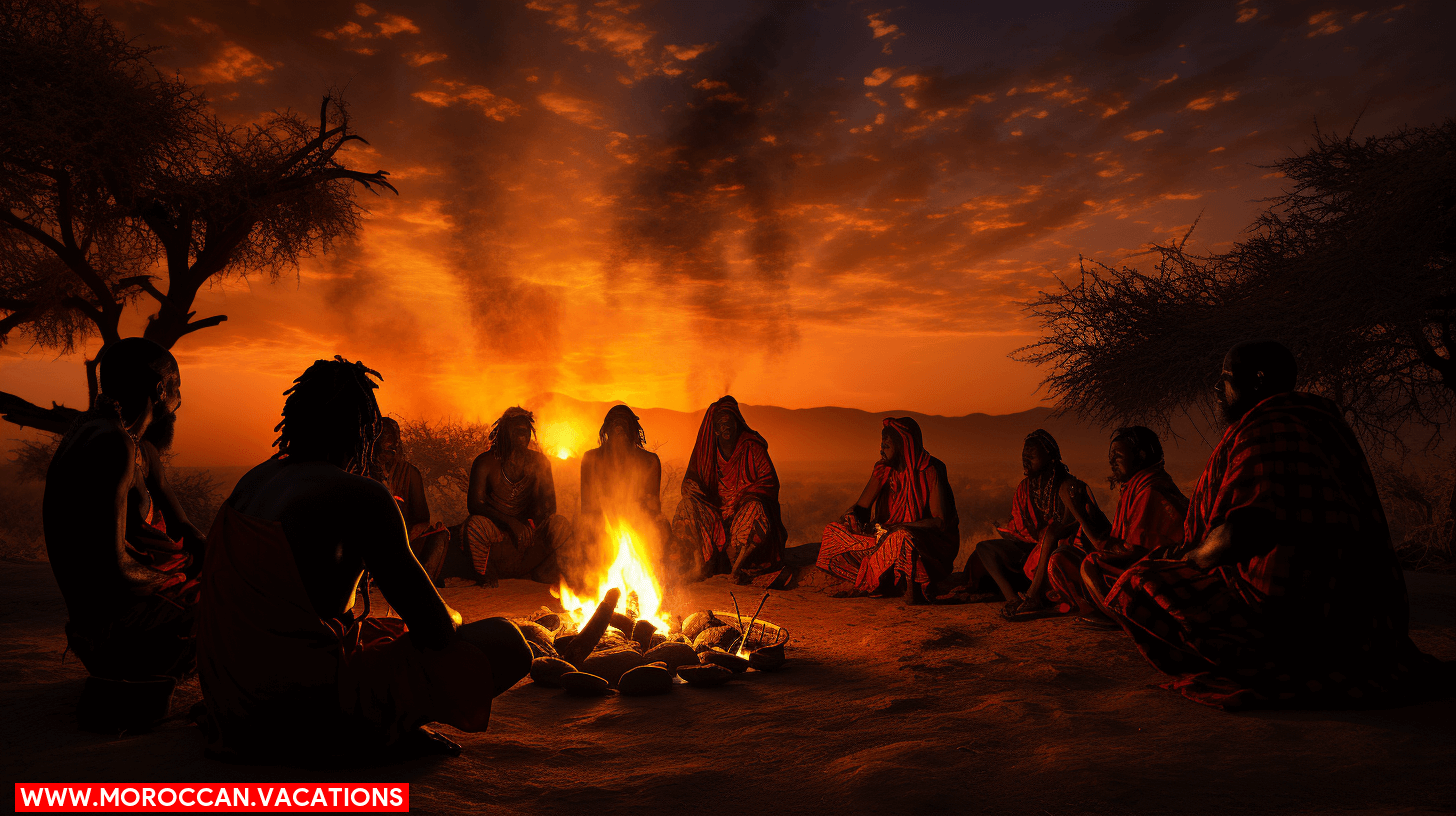

As you journey through Sahara’s tribal encounters, let’s turn your attention to the art of tribal storytelling. Observe closely the techniques employed, how the rhythm, tone, and body language transform mere words into impactful narratives. Consider too, how these narratives shape the tribe’s culture, serving as a resonant echo of their history and a blueprint of their values.
Storytelling Techniques
You’ll find yourself captivated by the art of tribal storytelling, an integral part of Sahara’s nomadic lifestyle, weaving tales that echo the rhythms of this ancient land. This storytelling approach is not mere entertainment, it serves as a vessel for wisdom, history, and customs, passed down through generations.
To get a sense of this, let’s explore three key techniques.
- Imagery: Tribal stories are rich in visual elements, painting the Sahara with words, transporting you right into the heart of the desert.
- Repetition: Repetitive phrases and rhythms serve as mnemonic devices, helping to etch the story deeply into the listener’s memory.
- Interactive Engagement: Storytelling is often a communal activity, encouraging audience participation, making the experience immersive and memorable.
Dive into these tribal narratives; experience the freedom they offer through shared wisdom.
Impact on Tribe Culture
Dive deeper into Sahara’s tribal culture and you’ll discover how the art of storytelling significantly shapes their customs, traditions, and social norms. Stories aren’t just idle chatter; they’re crucial threads in the cultural fabric. They bind generations, preserve history, and instill moral values. You’ll find that tales often encompass life’s complexities, mirroring the tribe’s struggles and triumphs. Their narratives, rich with symbolism and metaphor, are intricately woven tapestries reflecting their nomadic lifestyle and their profound connection to the natural world. It’s through these stories that they express their identity, their hopes and fears, their love for freedom. So, if you’re yearning for liberation, listen closely to their tales. They’ll offer you a unique perspective, a fresh appreciation of a life untethered.
Sahara’s Indigenous Cuisine
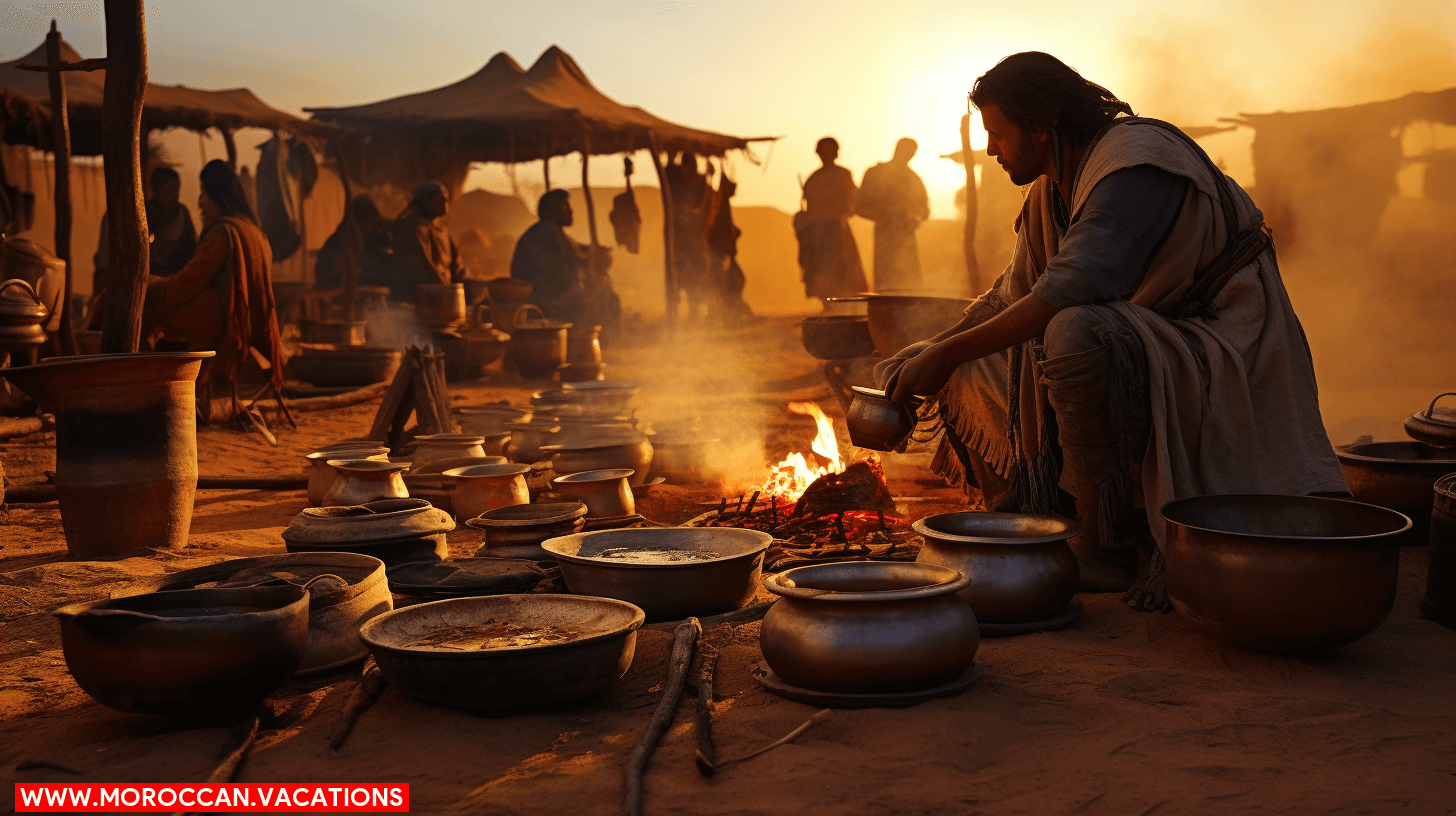

In the heart of the Sahara, you’ll discover a cuisine as unique and flavorful as the culture of the tribes that inhabit this vast desert. Sahara’s indigenous cuisine is a testament to the tribes’ resilience and resourcefulness, utilizing the sparse resources available in the desert environment.
- Taguella
This staple bread is made by burying dough in hot sand and covering it with embers. The result is a smoky, hearty bread that’s eaten with almost every meal.
- Mechoui
A traditional dish where a whole lamb or sheep is slow-roasted over an open fire. It’s often served during special occasions and is a symbol of hospitality and generosity.
- Dates and Almonds
Abundant in the region, these are often consumed as snacks or incorporated into dishes, providing a sweet contrast to the savory flavors.
These dishes offer a glimpse into the tribes’ shared history of survival and adaptation. The cuisine, much like the people themselves, is defined by its simplicity and depth of flavor. Sahara’s indigenous cuisine not only feeds the body but also tells a story of a people’s resilience and determination to thrive in one of the world’s harshest environments.
The Dynamics of Tribal Hospitality
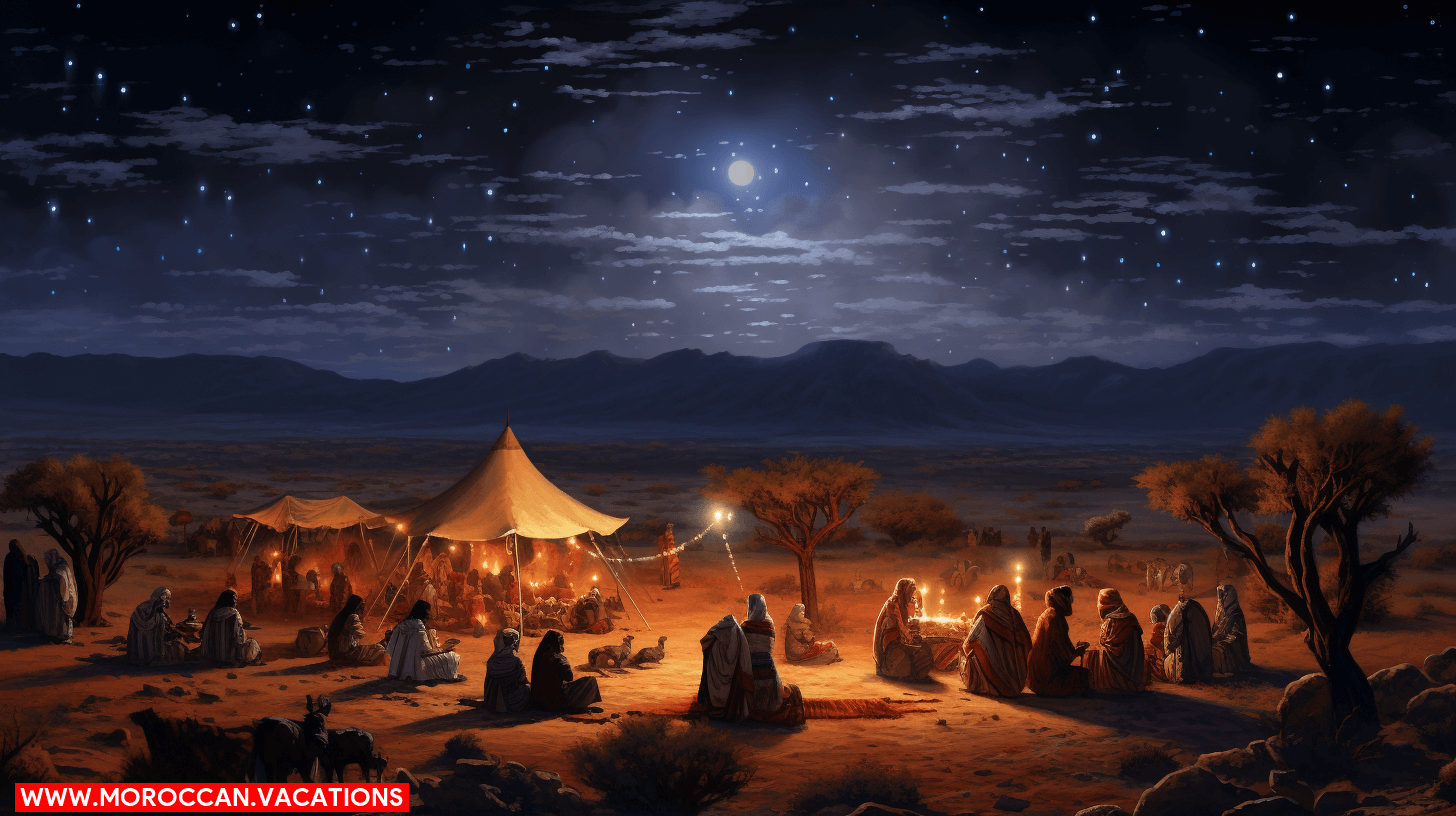

As you journey through the Sahara, you’ll notice the intricate dynamics of tribal hospitality. The rituals, rich with cultural significance, have profound influences on the nomadic lifestyle. Understanding these hospitality norms not only deepens your appreciation for the tribal culture but also sheds light on the social fabric that holds these communities together.
Hospitality Rituals Unveiled
While you’re experiencing the thrill of nomadic life, you’ll find that the Sahara tribes’ hospitality rituals aren’t just polite gestures, but are deeply embedded in their culture and way of life. These rituals are essential social tools, revealing respect, equality, and the inherent value of every visitor.
- Tea Rituals: The brewing and serving of tea, often three rounds, each with a distinct flavor and meaning, is a cornerstone of Sahara hospitality.
- Sharing a Meal: You’re invited to join in communal meals, symbolizing unity and equality. It’s an intimate connection to the tribe’s daily life.
- Gift-giving: This isn’t about material wealth, but a reciprocal exchange of goodwill.
Understanding these rituals gives you a deeper insight into the Sahara tribal culture, and the values they hold dear.
Influence on Nomadic Lifestyle
You’ll find that these three hospitality rituals greatly shape the nomadic lifestyle of Sahara’s tribes, creating a dynamic interplay of respect, unity, and goodwill. These practices, steeped in tradition, provide a window into the heart of their culture.
| Ritual | Influence on Lifestyle | Resulting Value |
| Sharing Tea | Encourages communal gatherings | Fosters unity |
| Offering Shelter | Promotes mutual aid | Instills respect |
| Gift Exchange | Strengthens bonds | Enhances goodwill |
With each sip of tea, shared shelter or exchanged gift, you’re not just participating in a ritual, but fostering unity, respect, and goodwill. It’s about more than survival; it’s about thriving in harmony with the community and the harsh landscape. Embrace these practices, and you’ll truly grasp the essence of the Sahara’s nomadic rhythms.
Navigating Sahara: Nomadic Routes
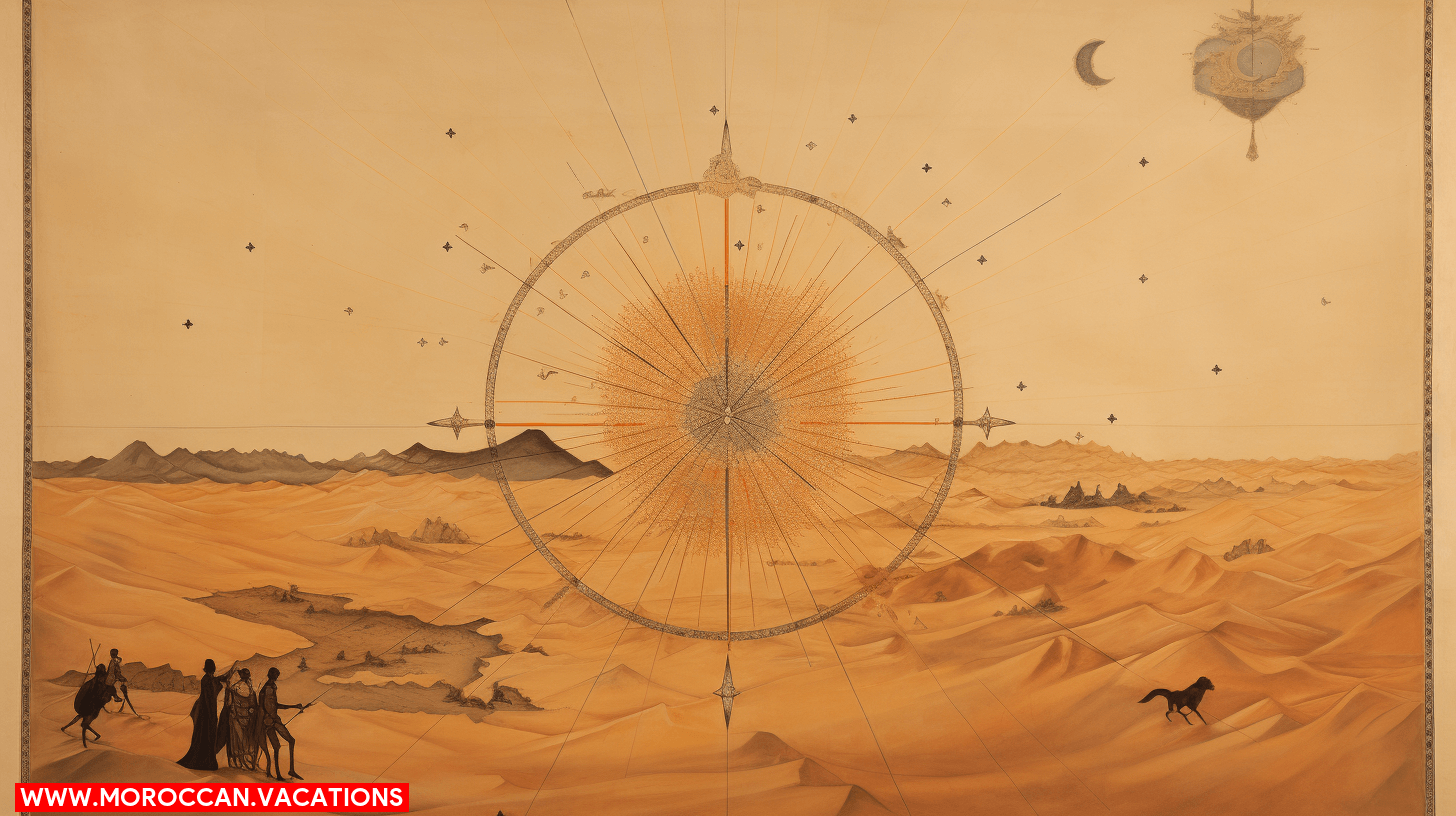

Before you start exploring, it’s crucial to understand that traversing the Sahara’s vast landscapes requires knowledge of the nomadic routes, which have been shaped by centuries of tribal movement. These paths aren’t simply lines in the sand; they’re a testament to generations of adaptation, survival, and culture.
- The Trans-Saharan Trade Route: Once a major conduit for commerce between Sub-Saharan Africa and the Mediterranean world, it’s now a testament to the resilience of desert dwellers.
- The Salt Route: Also known as the ‘Road of the Slaves’, this route marked the passage of those who transported salt blocks from the mines of Teghaza and Taoudenni.
- The Camel Caravan Routes: These routes, traced by the rhythm of the dromedaries, symbolize the soul of the Sahara.
These routes, steeped in history, offer a glimpse into the culture of the Sahara’s nomadic tribes. They’re not just navigational tools, but narratives of survival, commerce, and connection. So, remember, when you’re navigating the Sahara, you’re not just moving across sand dunes. You’re walking along paths carved by the resilience and indomitable spirit of the nomads who call the Sahara home.
Preserving Tribal Traditions in Sahara
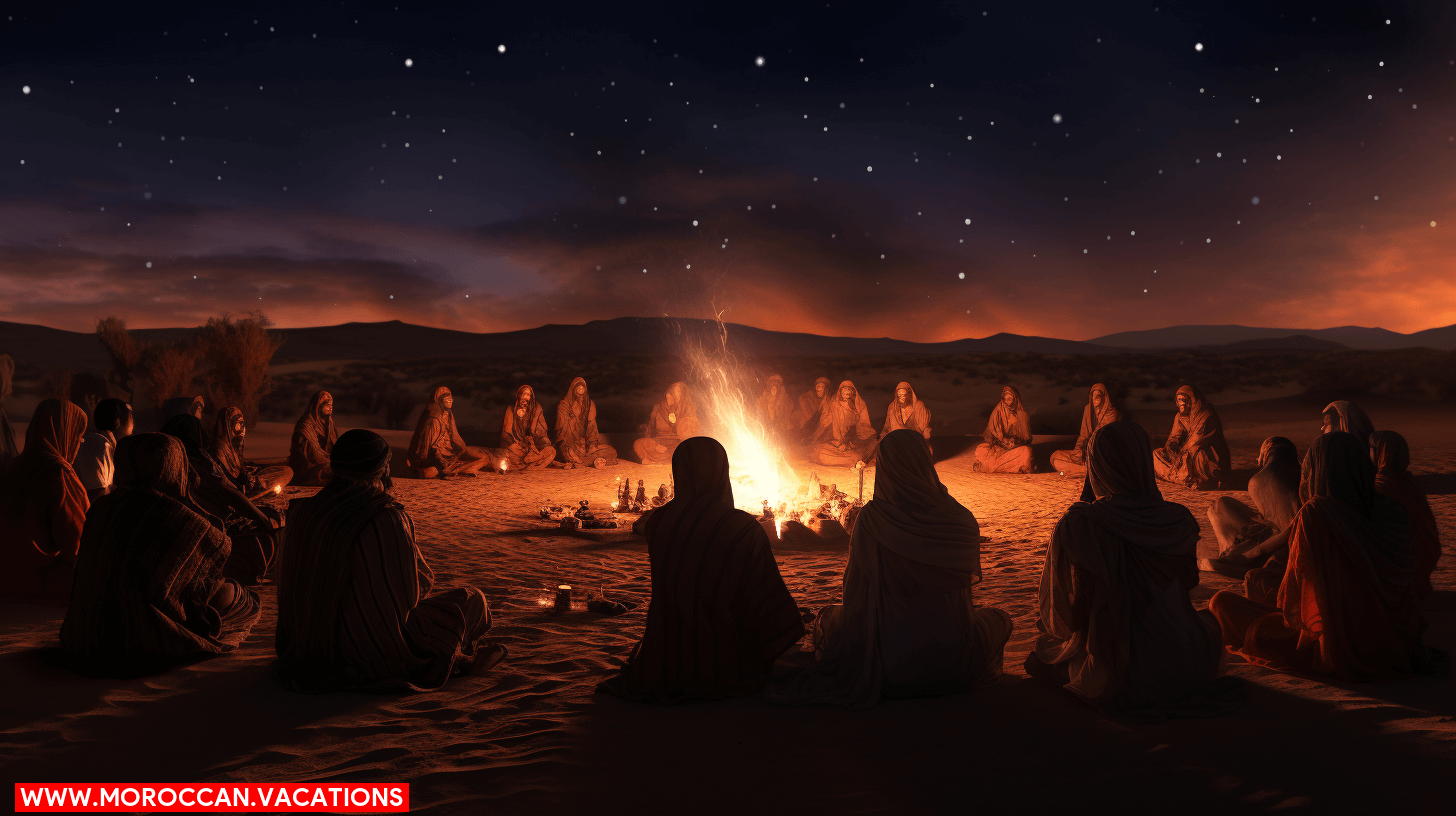

Stepping onto these historic routes, you’re not just traversing the Sahara, but also stepping into a rich tapestry of tribal traditions that the nomads are fiercely dedicated to preserving. This isn’t merely a journey across sand dunes, it’s a voyage into the heart of an age-old existence, persisting against the odds.
| Tradition | Emotion Evoked |
| Nomadic Storytelling | Awe at the depth of oral narratives, a sense of connection to generations past |
| Traditional Music and Dance | Joy and freedom in expression, uniting people across the vast desert |
| Saharan Hospitality | Warmth, a sense of belonging, despite the harsh and isolating environment |
You’re discovering the importance of preserving these traditions. Each tale told, song sung, and warm welcome extended is a thread in the fabric of Saharan culture. Accepting the desert’s hospitality, you’re not just a witness, but also a part of this preservation. As globalization threatens these traditions, your respect and appreciation contribute to their endurance. You feel a sense of freedom in the vast desert, intertwined with a deep respect for the nomadic life, and you realize that preserving these tribal traditions is intrinsic to the soul of the Sahara itself.
Introducing Ayoub Karbachi, a brilliant wordsmith and curator of the Moroccan Vacations website. Prepare to immerse yourself in mesmerizing narratives and extraordinary moments, as he unveils the allure of Morocco's captivating destinations like never before.
Related Articles
Moroccan Tea Culture: The Art of Mint Tea and Socializing
The Origins of Moroccan Tea Imagine yourself sitting in a bustling Moroccan café, the air thick with the aroma of mint tea. The clinking of glasses and laughter fill the air as people gather to socialize and connect over this cherished beverage. Moroccan Tea Culture:...
Marrakesh's Historical Hammams: Bathhouses With Architectural Grace
Origins of Marrakesh's Hammams Imagine stepping into a world of architectural marvels, where ancient traditions and modern luxury intertwine. Welcome to Marrakesh's historical hammams, where the artistry of the past meets the indulgence of the present. In these...
Cultural Experiences: Local Artisans and Their Crafts in Dades Valley
Dades Valley: A Cultural Overview You're about to embark on a vivid journey, exploring the heart of Dades Valley. Here, 60% of residents are skilled artisans. As you wander, you'll feel the pulse of centuries-old traditions alive in their crafts. You're not just...



